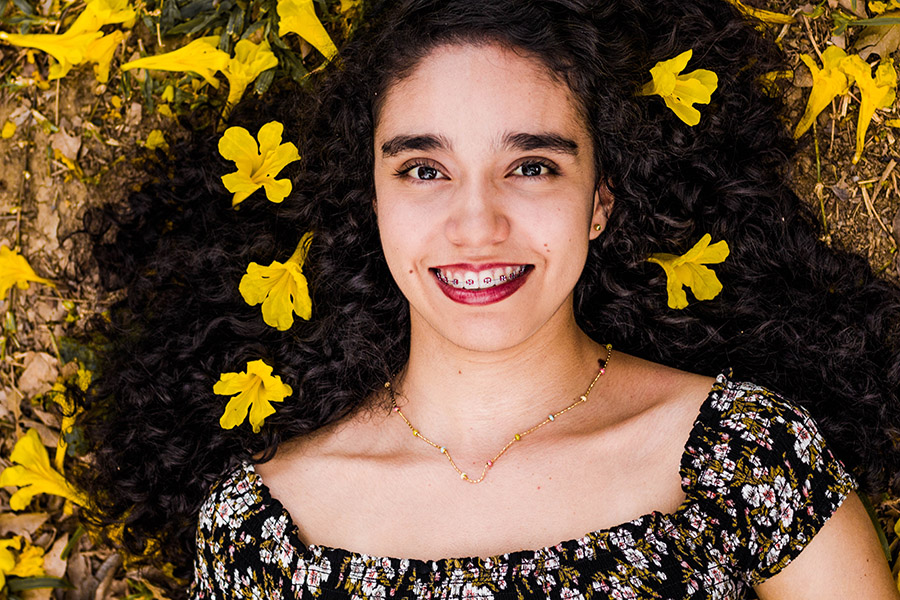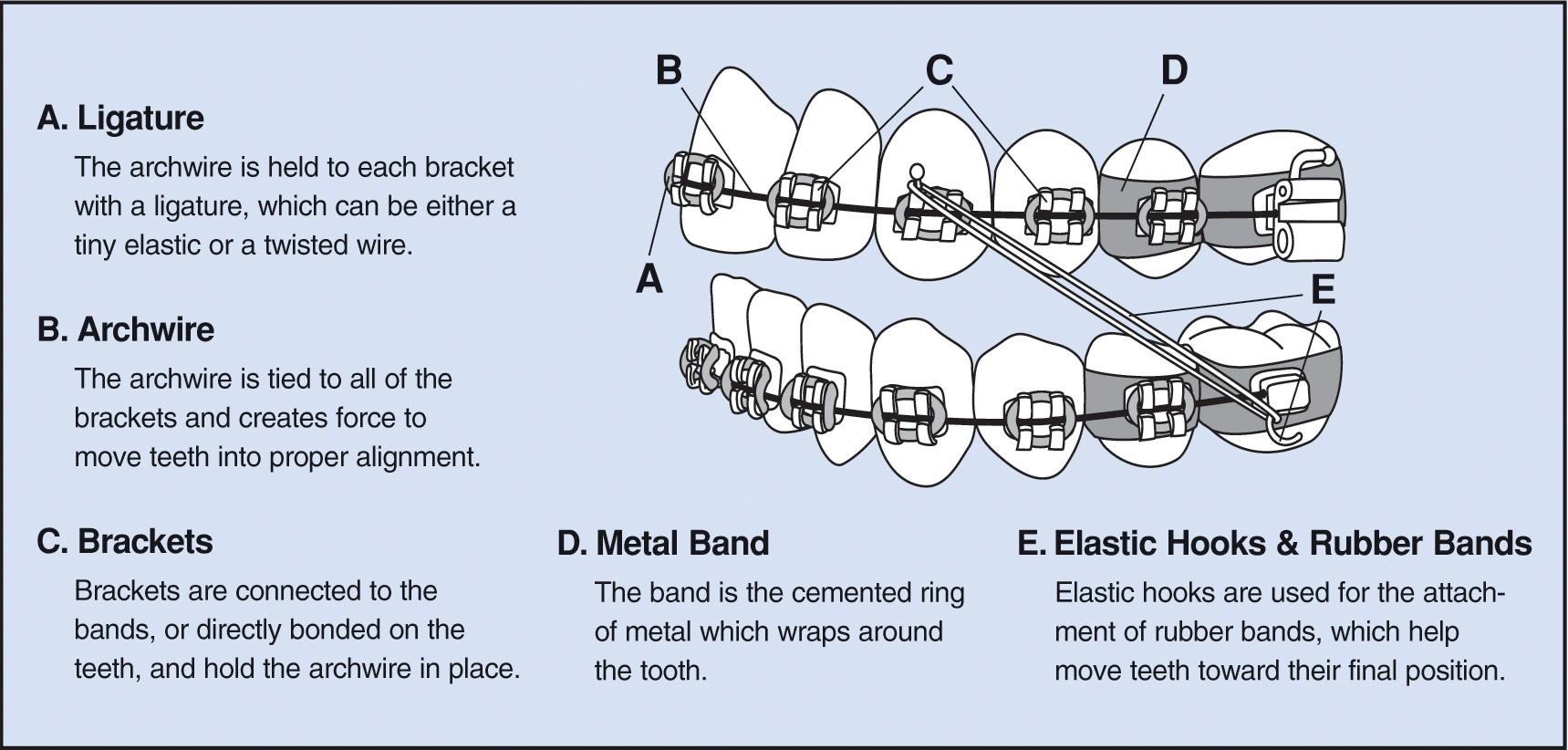Cracking the Code: Orthodontic Dictionary

M
Medical jargon can be like a foreign language, but at Murray Orthodontics, we’re all about breaking down barriers and keeping things straightforward. We’ve put together a handy dictionary of common dental and orthodontic terms to help you navigate your treatment like a pro. This dictionary is your go-to guide as you explore our website and learn how we can help you achieve your dream smile.

Orthodontic Lingo
| Anterior Teeth: | The six front teeth on each arch, both upper and lower. |
| Appliance: | Any device your orthodontist affixes to your teeth to shift your teeth or alter the shape and/or position of your jaw. |
| Arch: | The entirety of your upper or lower jaw. |
| Archwire: | The metal wire linking orthodontic brackets, guiding your teeth to their new positions. |
| Bands: | Metal rings generally cemented around the back teeth. |
| Bond: | The seal created by orthodontic cement that keeps your appliances in place. |
| Braces: | Fixed orthodontic appliances designed to straighten teeth. |
| Bracket: | A small metal, ceramic, or clear piece attached to each tooth on the arch. |
| Buccal: | The outer (cheek) side of the posterior (back) teeth in the lower and upper arches. |
| Cephalometic X-ray: | A head X-ray showing the relative positions and growth of the face, jaws, and teeth. |
| Chain: | Elastics linked together and placed around brackets to stabilize the archwire and close spaces gently. |
| Class I Malocclusion: | Molars are correctly aligned, but there is an anterior/posterior crossbite, an open bite or overcrowding on the arches. |
| Class II Malocclusion: | Also known as an overbite. The upper front teeth are positioned further forward than the lower teeth. |
| Class III Malocclusion: | Also known as an underbite. The lower front teeth are positioned further forward than the upper front teeth. |
| Closed Bite: | An overbite where the upper front teeth completely overlap the lower teeth. |
| Coil Spring: | A spring that fits between your brackets and over your archwire, creating space between your teeth. |
| Crossbite: | Misalignment where the upper back teeth bite inside or outside the lower back teeth, or the lower front teeth bite in front of the upper front teeth. |
| De-banding: | The removal of orthodontic bands from the teeth. |
| De-bonding: | The removal of affixed orthodontic brackets from the teeth. |
| Dental Recontouring /Odontoplasty: |
A simple cosmetic procedure to reshape the contours of the teeth for evenness.. |
| Diagnostic Records: | Records used to assess, plan, and implement treatments, including medical and dental history, radiographs, bite molds, and photographs. |
| Digital Radiograph: | Digital X-rays of teeth that can be viewed, stored, and transmitted via computer. |
| Elastic: | A small rubber band that is hooked between different points on your appliance/braces provides pressure to move your teeth and jaws to their new position to align your bite. |
| Elastic Tie: | The rubber band that fits around your bracket to hold the archwire in place. These come in a variety of colors. |
| Fixed Orthodontic Appliances: | Orthodontic appliances affixed to the teeth by the orthodontist and cannot be removed by the patient. |
| Functional Appliances: | Orthodontic appliances claiming to bring the lower jaw forward— a claim not backed by orthodontic research. |
| Gingiva: | The gums and soft tissue around the teeth. |
| Headgear: | A removable appliance consisting of a brace and external archwire, used for modifying growth and promoting tooth movement. |
| Impressions: | The process of making a model of your teeth by biting into a soft material that hardens into a mold of your teeth. |
| Interceptive Treatment: | Treatment performed on children with a mixture of adult and baby teeth to potentially reduce the need for major orthodontic treatment later. |
| Invisalign®: | An alternative to traditional braces, Invisalign® straightens teeth with a series of clear, removable, custom-molded aligners. |
| Ligating Modules: | Elastic, donut-shaped rings that secure the archwire to the bracket. |
| Ligation: | The act of attaching the archwire to the brackets. |
| Lingual Side: | The side of the teeth (both upper and lower) closest to the tongue. |
| Lower Expander: | A device used to widen your lower jaw. |
| Malocclusion: | A term derived from Latin, meaning “bad bite”. It refers to misaligned teeth that do not fit together properly. |
| Mandible: | The lower jaw. |
| Maxilla: | The upper jaw. |
| Mouthguard: | A removable device, made of plastic or rubber, that protects teeth and braces from sports-related injuries. |
| Odontoplasty (Dental Recontouring): | A minor cosmetic procedure to even out the contours of the teeth. |
| Open Bite: | A type of malocclusion where the upper and lower teeth do not make contact with each other (in the front and/or the back). |
| Orthodontics: | A specialized branch of dentistry focused on diagnosing, preventing, and treating malocclusions and irregularities of the jaw. |
| Orthodontist: | A dental specialist trained in preventing, diagnosing, and treating irregularities of the jaw and malocclusions. Orthodontists complete additional years of education and training after dental school. |
| Palatal Expander: | A device designed to widen your upper jaw. |
| Panoramic X-ray: | A rotating x-ray that captures images of your teeth, jaw, and other facial areas. |
| Plaque: | A sticky film comprised of saliva, food particles, and bacteria that can contribute to gum disease and tooth decay. |
| Posterior Teeth: | The back teeth. |
| Removable Appliance: | An orthodontic device that the patient can remove as needed. To be effective, it must be worn for a designated amount of time each day. |
| Retainer: | An appliance worn after your braces are removed to maintain the new position of your teeth. Some retainers are removable, while others are bonded to the tongue-side of several teeth. |
| Separator (or Spacer): | A small rubber ring that creates space between your teeth, usually the molars, before bands are attached. |
| Space Maintainer: | A fixed appliance used to hold space for a permanent tooth, typically used when a baby tooth is lost prematurely. |
| Wax: | A substance used to alleviate irritations caused by braces. |
| Wire: | A metal guide track for your teeth. It’s attached to the brackets to gently guide your teeth into proper alignment, and it’s changed periodically as your teeth move to their new positions. |

